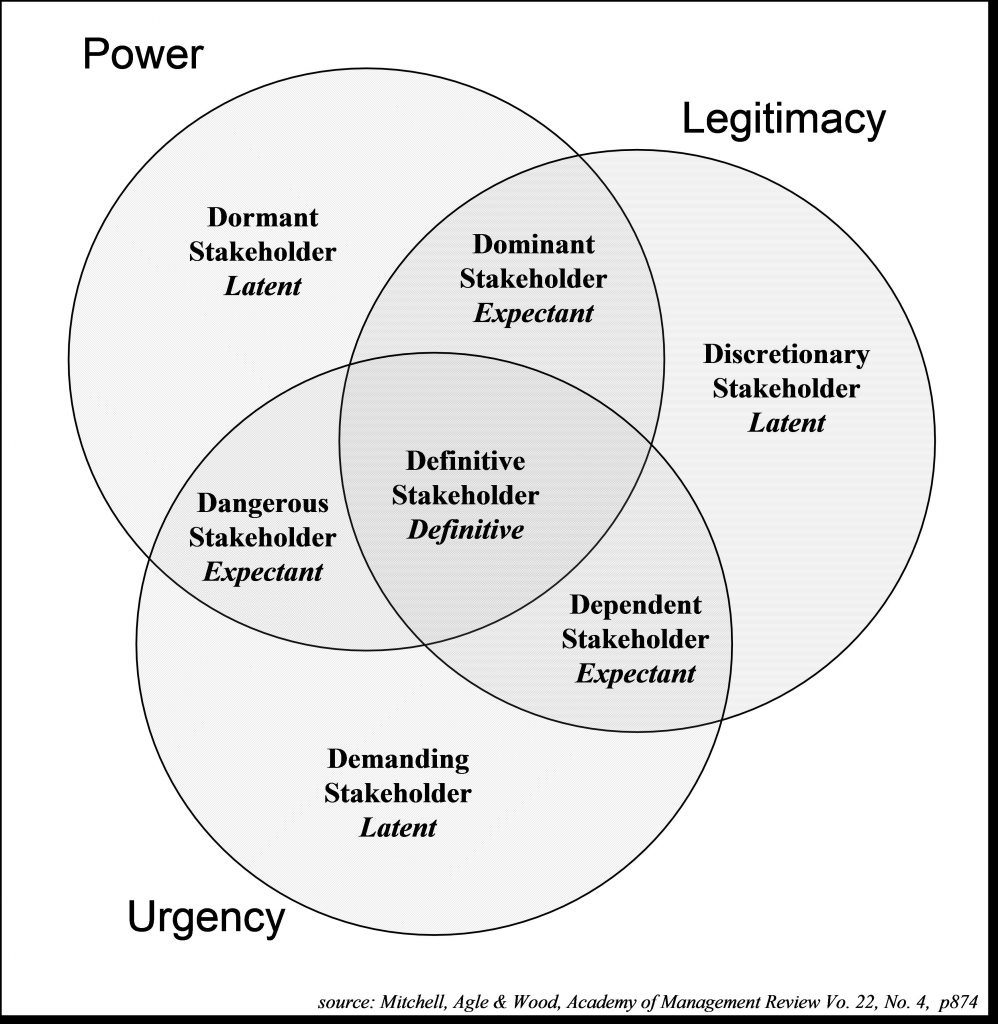The stakeholder model used in SARM was developed by Ronald K. Mitchell, Bradley R. Agle and Donna J. Wood, and first published in the Academy of Management Review, Volume 2, Issue No. 4 in 1997 in a paper entitled “Toward a theory of stakeholder identification and salience: defining the principle of who and what really counts”.
It describes seven distinct classes to which stakeholders can be allocated by answering three questions:
Do they have power? (i.e. can they make the project do something it would otherwise not have done?)
Do they have legitimacy? (are they on the same page as the project team, or do they have ‘their own agenda’?)
Do they have urgency? (are they really keen to see this new solution, or do they not really care?)
With these answers, a stakeholder or stakeholder group can be assigned to one of the seven stakeholder classes, shown in the diagram below:

In addition to separating stakeholders into seven distinct classes, the authors have described the latency of the stakeholders. Those that possess all three attributes are considered to be Definitive. Stakeholders that have any two of the three attributes are Expectant, while those that have just one of the three attributes are considered to be Latent.
One of the attractions of this model is that it combines in one model the features of two common styles of stakeholder model. Perhaps the most common stakeholder model is a 2×2 matrix that has Interest on one axis, and Influence on the other. That model can be found within the model adopted by SARM: look at the four segments contained within the legitimacy circle. In this case, Urgency equates to Interest and Power to Influence.
Another common style is the onion model or diagram, that has a number of layers in increasing distance from the centre circle, which represents the product or project goal itself. The closer to the centre a stakeholder is drawn, the closer or more critical their relationship to the project. And the can also be shown in close or distant proximity to each other. Aspects of the onion model can be found in the latency groups which classify according to possession of one, two or all three attributes.
This information sheet provides some key definitions and descriptions associated with the Mitchell, Agle and Wood stakeholder model that is used in SARM.
There is also an FAQ page on stakeholders here.

